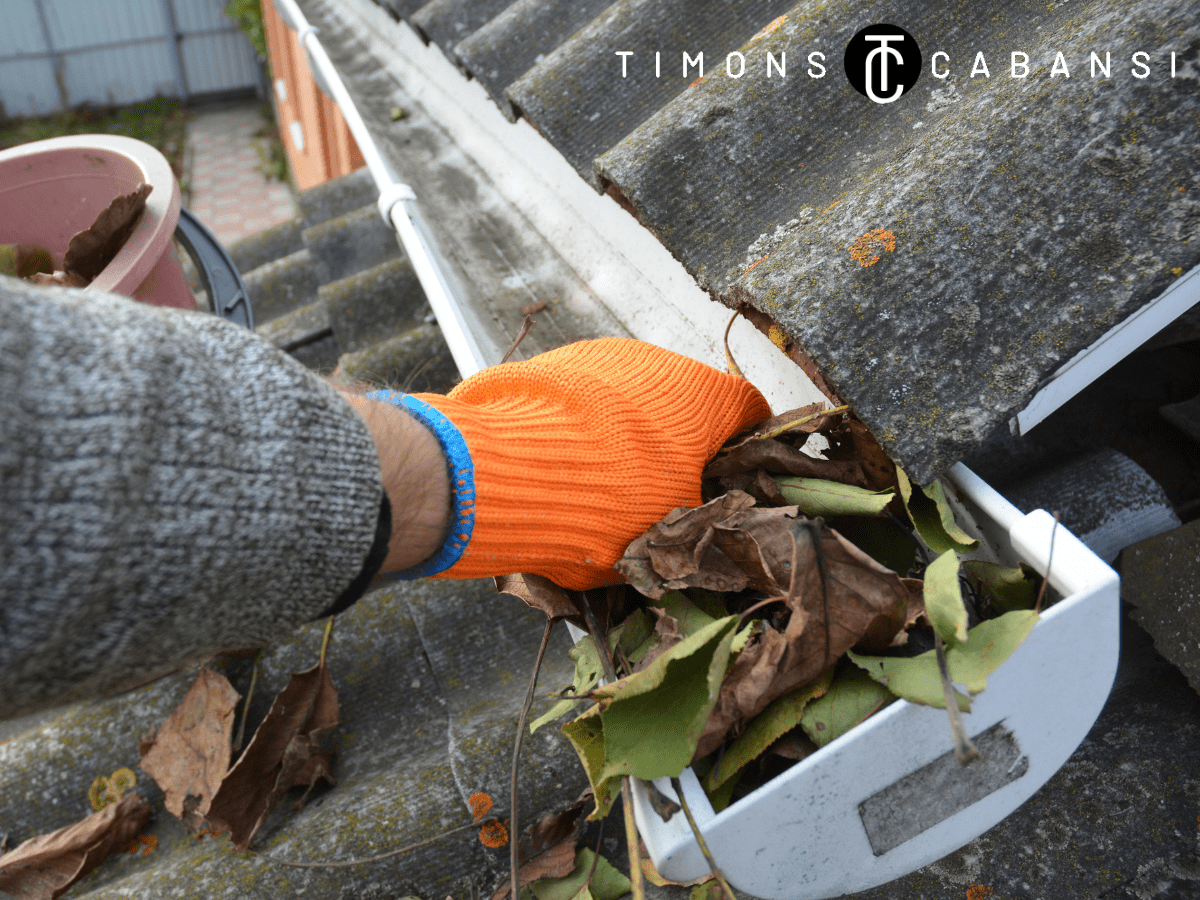Prepare Your Home for the Philippine Rainy Season: Essential Tips for a Secure and Dry Environment
By: Timons Cabansi

The rainy season in the Philippines can bring intense storms and heavy rain, making it essential to prepare your home. Taking proactive steps will help ensure your home stays safe and dry during this challenging time. From checking your roof to setting up an emergency plan, there are key actions I can take to protect my family and property.
As I prepare for the rainy season, I must focus on both the exterior and interior of my home. Making small adjustments can have a significant impact when severe weather strikes. With the right preparation, I can face the rains with confidence and peace of mind.
Understanding the Philippine Climate
The climate in the Philippines is characterized by distinct patterns and challenges, especially during the rainy season. I find it important to understand these aspects to protect my home and family.
Patterns and Seasonality
The Philippines has a tropical climate, divided into two main seasons: the dry season and the rainy season. The rainy season typically lasts from June to November, with the heaviest rains occurring from July to September.
During this time, the country experiences frequent thunderstorms and is also at risk for typhoons. These storms bring strong winds and heavy rainfall, which can lead to flooding.
I often keep track of weather forecasts to prepare for these seasonal changes. Local meteorological agencies, such as PAGASA, provide updates about impending storms and rainfall patterns.
Common Weather Challenges
While the rainy season brings necessary water, it also presents several challenges. Flooding can occur in many areas due to heavy rains, especially in low-lying regions. I pay attention to flood alerts for my area to ensure safety.
Additionally, the increased humidity can lead to mold growth in homes. Regular inspections of areas prone to dampness, like basements and bathrooms, are essential.
I also take note that power outages are common during strong storms. Having emergency supplies like flashlights and batteries ready helps me stay prepared. Understanding these challenges allows me to act quickly and effectively during adverse weather conditions.
Preparing the Exterior of Your Home

To prepare the exterior of my home for the Philippine rainy season, I focus on three main areas: the roof, gutters, and walls. These elements are crucial in protecting my home from heavy rains and strong winds.
Secure the Roof
First, I check the roof for any loose or damaged shingles. Fixing or replacing these can prevent leaks during heavy rainfall. I also look for signs of wear on the flashing, which seals joints and prevents water from entering. If I find any issues, I hire a professional for repairs.
Additionally, I clean the roof surface to remove debris like leaves and twigs. This helps prevent water pooling, which can lead to mold and structural damage. I ensure that my roof is sturdy enough to withstand strong winds.
Clear the Gutters and drains
Next, I will focus on the gutters and drainage systems. I clean them out by removing leaves, dirt, and other debris. This allows rainwater to flow freely and prevents blockages. When gutters are clogged, water can overflow and damage the walls and foundation.
I also inspect the downspouts to ensure they direct water away from the home. If they are not functioning properly, I make adjustments or replacements as needed. This helps to safeguard my home from potential flooding.
Inspect and Repair the Walls
Lastly, I inspect the exterior walls for any signs of damage or cracks. If I spot any, I repair them promptly using weatherproof sealants or materials that can handle moisture. This is essential, as water can seep through gaps and cause mold or rot.
I pay special attention to areas around windows and doors. Proper sealing prevents water leaks and keeps my home dry. Regular maintenance of the walls is key to ensuring long-lasting protection against the rainy season.
Inspecting Retaining Walls, Especially in the Highlands
Retaining walls is crucial, especially for homes in the highlands like mine here in Baguio or areas with significant elevation changes. These structures help prevent soil erosion and manage water flow during heavy rains. Here’s how I ensure my retaining walls are in top condition:
Check for Structural Integrity
I start by inspecting the retaining wall for any visible cracks or signs of bulging. These can indicate underlying structural issues. If I notice any significant damage, I consult a professional engineer to assess the stability of the wall and recommend necessary repairs.
Ensure Proper Drainage
Proper drainage is vital to the effectiveness of retaining walls. I check that the drainage pipes and weep holes are clear and unobstructed, allowing water to pass through without pressure buildup behind the wall. This prevents waterlogging and reduces the risk of wall failure.
Maintain the Surrounding Area
I keep the area around the retaining wall free of debris and plant growth that could disrupt the structure. Regularly trimming vegetation and removing leaves helps maintain the wall’s integrity. Additionally, I ensure that the soil and mulch levels are consistent to avoid undue pressure on the wall.
Protecting the Interior of Your Home
Keeping the interior of my home safe during the rainy season is crucial. I focus on waterproofing strategies and ensuring my electrical systems can withstand potential flooding.
Waterproofing Strategies
I start by inspecting my walls and floors for cracks and gaps. These can allow water to seep in during heavy rains. If I find any issues, I fill them with a waterproof sealant.
I also consider using waterproof paint on interior walls, especially in basements or areas prone to dampness. This type of paint helps prevent moisture from penetrating the walls.
In addition, installing weather stripping around windows and doors can block rainwater. It’s essential to check for signs of peeling paint or discoloration, which indicate water damage. Regular maintenance helps me stay ahead of water-related problems.
Flood-Proofing Electrical Systems
Protecting my electrical system is another key step. I elevate electrical outlets at least 12 inches above the floor level. This reduces the risk of water damage during a flood.
Additionally, I invest in GFCI outlets. These outlets cut off power if they detect moisture, providing an extra layer of safety.
I also ensure that circuit breakers and fuse boxes are stored in higher locations in my home. I keep a flashlight and emergency battery-powered lights on hand to use during a storm. Being prepared helps me feel more secure, knowing my interior is protected.
Creating an Emergency Plan

I believe having a solid emergency plan is essential as the rainy season approaches. This plan includes assembling an emergency kit and understanding evacuation procedures. Both elements ensure safety and preparedness during unexpected events.
Assembling an Emergency Kit
I prioritize having an emergency kit ready for the rainy season. This kit should include essential items to last at least three days. Here are the key components I focus on:
- Water: At least one gallon per person per day.
- Non-perishable Food: Canned goods, protein bars, and dried fruits work well, like sweet dried mangoes, my wife’s favorite.
- First Aid Supplies: Bandages, antiseptics, and any personal medications.
- Flashlight and Batteries: A reliable light source is crucial during power outages.
- Portable Charger: To keep my phone charged for communication.
- Portable Power Bank: It is best to have two or a big unit of power banks.
I also add personal documents, cash, and clothing that can help in emergencies. Checking and updating the kit regularly is crucial, especially before the rainy season arrives.
Evacuation Procedures
Knowing evacuation procedures is another vital part of my emergency plan. I ensure my family understands the safest routes to leave our home if necessary. Here’s how I prepare:
- Identify Safe Locations: I locate nearby shelters or higher ground.
- Create a Communication Plan: I make sure each family member knows how to contact each other during an emergency.
- Regular Drills: I practice evacuation drills with my family to help everyone feel comfortable with the plan.
I also stay informed about local weather alerts and evacuation orders. Keeping a portable emergency pack ready makes evacuation smoother if the situation arises.
Takeaway
Frequently Asked Questions (FAQs)
As I prepare my home for the Philippine rainy season, I often think about the important steps I need to take. Here are some essential questions and answers related to waterproofing, flood prevention, emergency supplies, and maintenance.
1. What are the essential steps to waterproof my home before the rainy season begins?
To waterproof my home, I start by sealing all windows and doors with weather stripping. I check for cracks in walls and fill them with caulk. Additionally, applying a waterproof sealant to the roof and exterior walls helps prevent water from seeping in.
2. How can I prevent flood damage to my home during the rainy season?
I ensure that my gutters and downspouts are clean and free from debris. This allows rainwater to flow freely. Elevating electrical outlets and appliances above potential flood levels can also minimize damage.
3. What are the most critical areas of the home to inspect and maintain before the onset of monsoon rains?
I focus on five key areas: the roof, gutters, downspouts, windows, and doors. Checking the roof for missing tiles or leaks is crucial. I also make sure my gutters are in good condition.
4. What emergency supplies should I have on hand for the Philippine rainy season?
I keep a stock of essential emergency supplies. This includes bottled water, canned food, flashlights, batteries, a first-aid kit, and important documents in a waterproof container. Having a portable charger for my phone is also important.
5. How can I ensure proper drainage around my property in preparation for heavy rains?
I clear any debris from drainage ditches and ensure they are functioning properly. I also check that my yard has sufficient grading to direct water away from my home. Installing a French drain can help if my area is prone to flooding.
6. What are the best practices for dealing with leaks and dampness during the rainy season?
If I notice leaks, I address them immediately by sealing them with appropriate materials. I use dehumidifiers in areas prone to dampness. Keeping windows open when it is safe allows for better air circulation and reduces moisture.
Disclaimer: This article is for informational purposes only and does not constitute financial, legal, or investment advice. Always consult with a professional before making any decisions.
Please Kindly Follow
TimonsCabansi.com – Where Life Meets Wisdom, One Article at a Time.
